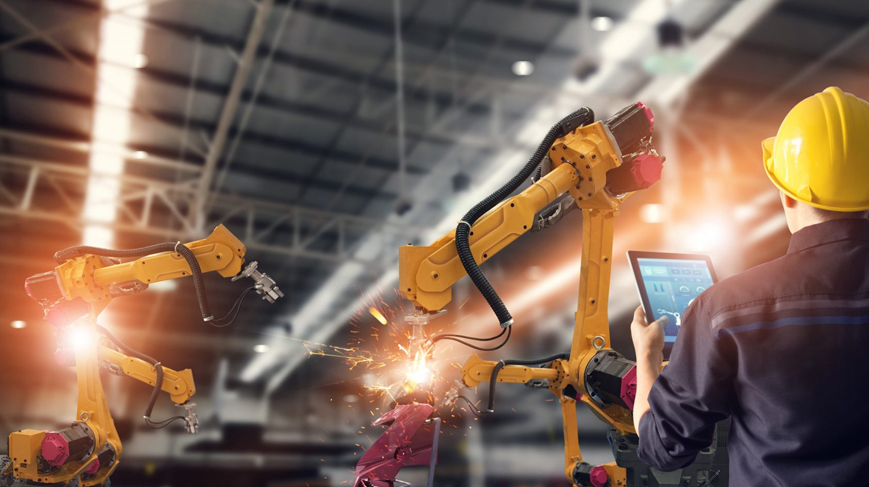
BLOG




Industry 4.0 is different from earlier stages because of development in robotics, a flood of data from IoT, the rise of powerful processing power, infinite storage capacity, cloud platforms, big data analytics, and advances in Machine learning
The fourth industrial revolution or Industry 4.0 is a term used to define incremental steps to improve the industrial processes to attain higher output. Whether its production, prototyping, development, logistics, or supply, Industrial automation is a constant exercise of improving processes that can yield better results.
What makes Industry 4.0 different from earlier stages is a significant development in robotics, a flood of data from Internet-connected devices aka IoT, the rise of powerful as well as affordable processing power, infinite storage capacity, cloud platforms, big data analytics, and advances in Machine learning (a subset of AI).
New technologies:
Covid-19 has further accelerated the need to build the right technical infrastructure that can support the incremental flux of automated systems. however, it is critical to build an infrastructure that’s robust and work flawlessly as Industries will depend on it. There are certain technologies that are going to see exponential growth soon, and these are:
Trends:
The dominant technologies of Industry 4.0 will be IT, electronics, and robotics, though it will also embrace other knowledge areas such as biotech and nanotech. What required is a shift toward design thinking instead of production thinking and technology providers with continuous improvement in building it as a core competency will be market leaders. Also, a lot of collaborative and cross-cultural competencies will be required to be able to work in network environments sustainably. On the technical side, connecting the network will mean a lot of standardization.
The entire industry of IoT is moving towards building smart platforms, where multiple things are possible with one single solution. Be it headless solutions such as Alexa and Google assistance or be it solutions with rich displays and with touch screens. It is great to have multiple features with one single solution. Platform-based edge computing is changing the way we use embedded systems for AI and IoT applications.
Previously many M2M or IoT devices were deployed in scenarios where there were not capable of decision making. The entire network of nodes was just communicating the data to the cloud or operator and waiting for the decision-makers to take the actions. But with the advent of technologies such as AI, along with an increased demand for Interoperability has enabled edge devices to make decisions on their own.
There is a huge demand for smart nodes that can have predictive maintenance, advanced resource planning, and much more. Imagine a fire like scenarios in a power plant, what if there is a smart edge computing device which cannot just predict the fire it also controls the same and stabilize the scenario. This is the future.

Constraint:
The most significant bottlenecks impacting the widespread adoption of Industry 4.0:
As the number of IoT devices grows exponentially and the capabilities of the Internet of Things systems constantly evolve, both information density and sensitivity are increasing. In addition, IoT systems are continuously moving from being passive sensor systems to active control systems. This development leads to an increased concern for the security of the various IoT devices.
IoT systems can be misused for attacks on public infrastructure both in the physical world as well as on key internet and communication infrastructure. Since these devices are highly distributed, it is exceedingly difficult to fight these attacks. At the same time, modern society is building an increasingly complex technical infrastructure that is more and more controlled by automated systems.
Many IoT systems are based on standard operating systems. An embedded Linux device is no different from a full Linux server when it comes to capabilities and functions. On the one hand, this makes device development easier and faster. The downside is that this makes the unit just as susceptible to attacks as a regular server. In contrast to a server deployment, an IoT system usually does not have a dedicated system administrator. Some companies have recently started to focus more on OT (operational technology) and include this as a part of their IT strategy for IoT devices, but this is far from common yet.
Conclusion:
Manufacturing companies will definitely remain in the traditional sense but the industrial business model, organization structure, processes, and capabilities will change. This transformation will lead to the birth of new competitors with disruptive business models. New technologies evolve over a period of time and when combined with other transformative technologies, a whole new system has created that change the industry for good. Similar evolution will happen with Industry 4.0, as technologies such as the availability of large amounts of unstructured data, cloud platforms, powerful computing power, Big data analytics, and advances in Machine learning, all evolve simultaneously that will hugely benefit manufacturing.